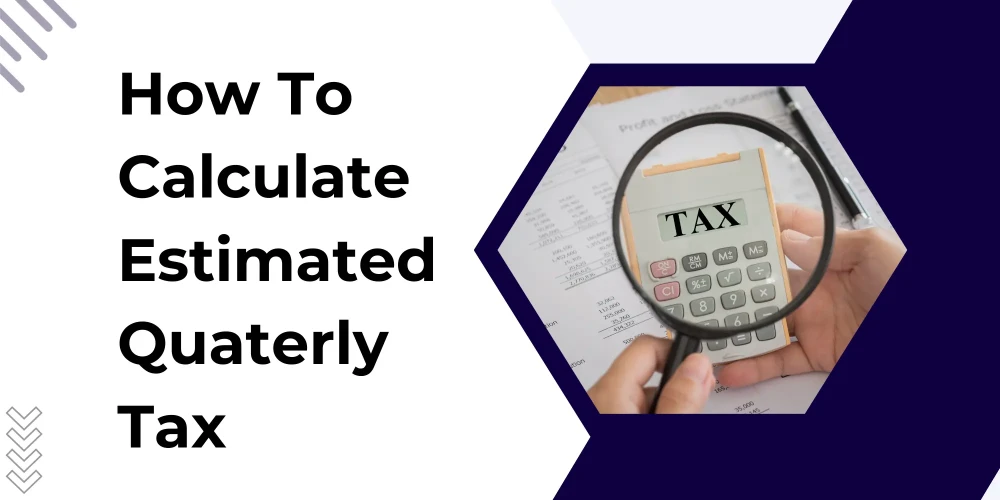Table of Contents
As you prepare to file your income tax returns this season, the two most important concepts that can unlock substantial tax savings are tax deductions and tax credits. Often confused as interchangeable, deductions and credits have distinct definitions and tax-minimizing functions for filers. Grasping the precise differences can help you minimize your tax liability and maximize tax benefits. Here’s all you need to know about Tax Credits vs Tax Deductions, their role, and impact on your fillings:
Understanding Tax Deduction
A tax deduction allows you to subtract qualifying expenses from your gross taxable income. By lowering your taxable income, tax deductions effectively reduce the amount of taxes you owe. The actual tax savings amount from an eligible deduction will depend on your tax bracket. If you are in a higher bracket, you will gain higher potential tax savings from the same amount of qualifying deductions.
Itemized vs. Standard Deductions
Most taxpayers qualify for the standard deduction, which is a set amount based on your filing status. However, itemized deductions allow you to deduct specific expenses like medical bills, state taxes, mortgage interest, and charitable donations. The catch is that your itemized deductions must exceed your standard deduction to benefit. For example, a married couple filing jointly has a $27,700 standard deduction for 2023. If their total itemized deductions are less than $27,700, they should take the standard deduction. However, if their itemized deductions total $29,100, they should itemize since that exceeds their standard deduction by $1,400.
Understanding Tax Credits
In contrast to deductions that reduce taxable income, federal and state tax credits provide direct dollar-for-dollar reductions of your actual tax liability. The value of a tax credit does not vary based on your tax bracket or income level. The most common federal tax credits that you can claim to lower your overall tax bill include:
- Earned Income Tax Credit (EITC) - Refundable credit for working taxpayers with low to moderate incomes
- Child Tax Credit (CTC) - Credit up to $2,000 per qualifying child dependent
- Child and Dependent Care Credit (CDCC) - Credit for childcare expenses incurred to enable work
- Retirement Savings Contributions Credit - Credit for elective deferrals into 401(k) or IRA accounts
- Premium Tax Credit - Credit that helps pay insurance premiums under the ACA
- Education credits like the AOTC and LLC
The distinction between refundable and nonrefundable credits matters as well. A nonrefundable credit can reduce your federal income tax liability to $0, and any unused credit amount gets forfeited. Refundable tax credits like the EITC and the CDCC wipe out your tax liability and trigger the IRS to issue you a tax refund check for any credit amount exceeding taxes owed.
Key Differences Between Tax Credits and Tax Deductions
Tax deductions and Tax credits are two effective tools that help reduce your tax liability. While both provide substantial tax savings, there are a few differences that make them unique.
Tax deductions lower your taxable income for that filing year, thereby decreasing your current tax liability. The monetary savings value of a deduction varies based on your marginal tax rate and bracket. Higher earners in higher brackets realize greater savings per dollar deducted.
Credits, in contrast, directly reduce your actual final tax amount owed dollar-for-dollar. Nonrefundable credits decrease tax liability, while refundable credits can generate a tax refund. The savings value of a tax credit stays consistent across income levels and tax brackets. A $100 tax credit saves all filers $100 regardless of the bracket, while a $100 deduction saves higher-bracket taxpayers more than lower earners.
In simple terms - A tax credit results in a predictable, fixed reduction of your tax bill. The benefit of a deduction changes based on your taxable earnings and marginal rate. Strategically leveraging both deductions and any qualifying credits leads to maximum tax relief.
Examples to Illustrate the Distinction
To demonstrate the practical difference in how deductions and credits function, let's use a hypothetical scenario and examples for two different filers.
Rachel is a single taxpayer with $95,000 in taxable income. Based on her income and filing status, her marginal federal tax rate is 24%.
John is single with $65,000 in taxable income, putting him in the 22% marginal tax bracket.
Scenario 1 - Tax Deduction
- Rachel has $10,000 in deductible mortgage interest payments
- By taking the itemized deduction, her taxable income is lowered to $85,000
- Her tax savings from the $10,000 deduction equals her marginal rate of 24% x $10,000 = $2,400
- John also pays $10,000 in mortgage interest
- His taxable income lowered to $55,000
- His tax savings at his 22% rate is $2,200
Higher earner Rachel saves $200 more by deducting the same $10,000 of mortgage interest due to her higher marginal tax rate.
Scenario 2 - Tax Credit
- Rachel qualifies for a $2,000 Child Tax Credit
- The nonrefundable credit directly reduces the taxes she owes by $2,000
- Lower earner John also qualifies for a $2,000 Child Tax Credit
- He too owes $2,000 less in federal taxes with the credit
With the flat $2,000 Child Tax Credit, both Rachel and John receive the same tax benefit of $2,000 regardless of their differing incomes and tax brackets.
Comparative Impact Analysis
Comparing these two scenarios illustrates the key conceptual differences. While both deductions and credits reduce overall taxes owed, deductions provide progressive tax relief favoring higher earners in higher brackets whereas credits deliver equal benefits to all eligible taxpayers up to the credit amount.
Considerations for Tax Planning
Tax planning is an essential component of personal financial management that involves making strategic decisions to minimize tax liabilities. With the complexities of the US tax code, you must evaluate methods to reduce taxes through deductions or credits based on your circumstances. Some key factors to consider when choosing between the two include:
Tax Bracket
- Filers in higher marginal tax brackets benefit more from deductions compared to lower-bracket taxpayers. Each dollar deducted saves more taxes the higher your bracket.
- Lower-income filers with little to no tax liability benefit more from refundable tax credits that can result in a refund.
Family Situation
- Families with dependents should prioritize refundable credits like the Child Tax Credit and Child and Dependent Care Credit to maximize savings.
- Single filers with no dependents benefit less from family-focused credits and should weigh the standard deduction vs itemized deductions.
Income Sources
- Self-employed individuals can maximize business expense deductions to offset their self-employment income.
- Salaried employees with minimal unreimbursed business expenses are better off with credits.
Itemization Factors
- If your total itemized deductions do not exceed the standard deduction amount for your filing status, credits will provide greater tax savings.
- Homeowners with a mortgage can benefit from itemizing deductions for mortgage interest and property taxes.
Maximizing Tax Benefits with Deductions and Credits
To maximize tax savings, leveraging all available deductions in tandem with applicable credits is the optimal approach rather than viewing them as mutually exclusive options.
The best path depends on your unique financial situation. Some key things to keep in mind include:
- Don't Assume You Need to Choose - Evaluate your tax situation to see if you can benefit from both deductions and credits rather than viewing it as an either/or choice.
- Run the Numbers - Calculate your taxes to quantify the precise savings from your eligible deductions vs applicable credits.
- Adjust Withholdings - If you can claim substantial deductions or credits, adjust your W-4 withholding to improve cash flow by increasing net paychecks rather than waiting for a refund.
- Understand Interactions - Claiming certain credits like the Premium Tax Credit can affect eligibility for the medical expense deduction. An accountant can help avoid reducing one benefit by claiming the other.
- Reassess Annually - Changes in income, dependents, major purchases, and life events may alter whether deductions or credits provide greater advantage year-to-year.
Impact on Different Taxpayers
While deductions and credits function differently, maximizing both can lead to substantial tax savings for any taxpayer. When developing a comprehensive tax minimization strategy, it is important to understand how deductions and credits uniquely impact these two main categories of taxpayers:
For Individuals
Filing Status - Single filers should ensure they take the higher standard deduction if their total itemized deductions don't exceed that amount. Review state filing requirements, as some states allow itemization even if taking the standard deduction federally. Married couples filing jointly should review deductions together to maximize tax benefits and coordinate charitable gifts for optimal timing.
Income Sources - Carefully review all tax documents like W-2s, 1099s, and 1098s for any amounts that are eligible for deduction, such as 401k contributions, HSA contributions, self-employment expenses, student loan interest paid, etc. If you have a home office, calculate allowable home office expense deductions.
Life Events - Major life events like having a child, purchasing a home, paying for college tuition, or taking on a new job open the door to new tax credit opportunities and deductions. Changes in marital status, dependents, income, and place of residence can also affect your tax scenario.
Recordkeeping - Gather and organize all receipts and written acknowledgments to substantiate deductions for charitable gifts, medical expenses, mortgage interest, property taxes, unreimbursed work expenses, moving costs, child care costs, and more. Good recordkeeping enables maximizing legitimate deductions.
Tax Planning - Consult a tax professional to map out a customized multi-year tax reduction blueprint based on your income, family status, homeownership, retirement savings goals, education savings goals, and other personal circumstances and priorities.
For Businesses
Entity Structure - Owners of pass-through entities like S-Corps and Partnerships can deduct applicable business losses on their returns, providing individual tax savings. C-Corps directly benefit from corporate deductions and credits to lower taxable income.
Expenses - Take all eligible deductions for ordinary and necessary operating expenses, equipment investments, supplies, wages, rent, utilities, transportation, meals & entertainment at 50%, start-up costs with limitations, and other legitimate business costs.
Accounting Methods - Certain tax accounting treatments like cash basis for service businesses, accrual basis, and Section 179 expense elections provide increased first-year deductions. Use cost segregation studies to accelerate depreciation.
Tax Credits - Look into all federal and state business tax credit opportunities like the Research & Development credit, renewable energy credits, small business health care credit, and more. Credit eligibility depends on the number of employees and average wages paid.
Net Operating Losses - NOLs can be carried forward indefinitely and back two years to offset taxable income in other profitable years. This provides potential refunds or reduction of future tax bills.
Recent Changes in Tax Laws
As you prepare to file your 2023 taxes, being aware of the key changes in the US tax legislation can reveal tax saving opportunities to benefit from or help avoid surprise increases in your tax liability. Carefully reviewing all legislative updates that pertain to the credits and deductions relevant to your situation enables maximizing your tax relief. Here are some key recent tax law changes to note:
Reversion of Expanded Pandemic Tax Credits
- Child Tax Credit reduced from up to $3,600 back to $2,000 per child. Only $1,600 is refundable for most.
- Child and Dependent Care Credit maximum decreased from up to $8,000 down to up to $2,100 per family. It is no longer fully refundable.
- Earned Income Tax Credit remains expanded, but the eligibility age increased from 19 to 25 for workers without dependents.
New Tax Credits and Incentives
- The Inflation Reduction Act introduced new credits for electric vehicles, solar panels, and home energy efficiency upgrades.
- EV credit is now up to $7,500 for more vehicles. Credit for Used EVs up to $4,000 is available.
- Home energy credit increased to 30% for eligible whole-house improvements.
- Section 179D deduction extended for commercial building energy upgrades.
Other Impactful Changes
- Higher retirement account contribution limits.
- Increase in standard mileage rate and Health Savings Account limits.
Implications for Taxpayers
- Families and lower-income filers receiving expanded Child Tax Credit, Child Care Credit, and EITC during the pandemic may now get smaller credits or refunds.
- New green energy credits incentivize eco-friendly updates to homes or vehicles.
- The SALT deduction cap returning to $10,000 will mean higher tax bills for some filers previously benefiting from uncapped deductions.
- Update the W-4 form with the employer to change withholdings based on a projected decrease in refund or increase in tax liability.
- Businesses making qualifying energy efficiency upgrades to buildings by 2032 can now claim an enhanced 179D tax deduction.
Check our latest blog A Complete Guide to Understanding Recent Changes in US Tax Law to learn how the recent changes can impact your tax liability.
Conclusion
With numerous credits and deductions available, staying current and making the most of these tax-saving tools can get incredibly challenging. Rules phase-outs, limitations, and interactions between provisions further complicate maximizing benefits. Consulting professional experts like NSKT can simplify the process. NSKT offers personalized tax services to meet your unique needs, provides tailored recommendations to leverage deductions and credits, and uncovers every opportunity to reduce your tax liability.
The information provided here is for general informational purposes only and should not be construed as professional advice. The tax-related content on this blog is based on our understanding of tax laws as of the date of publication and may be subject to change.







